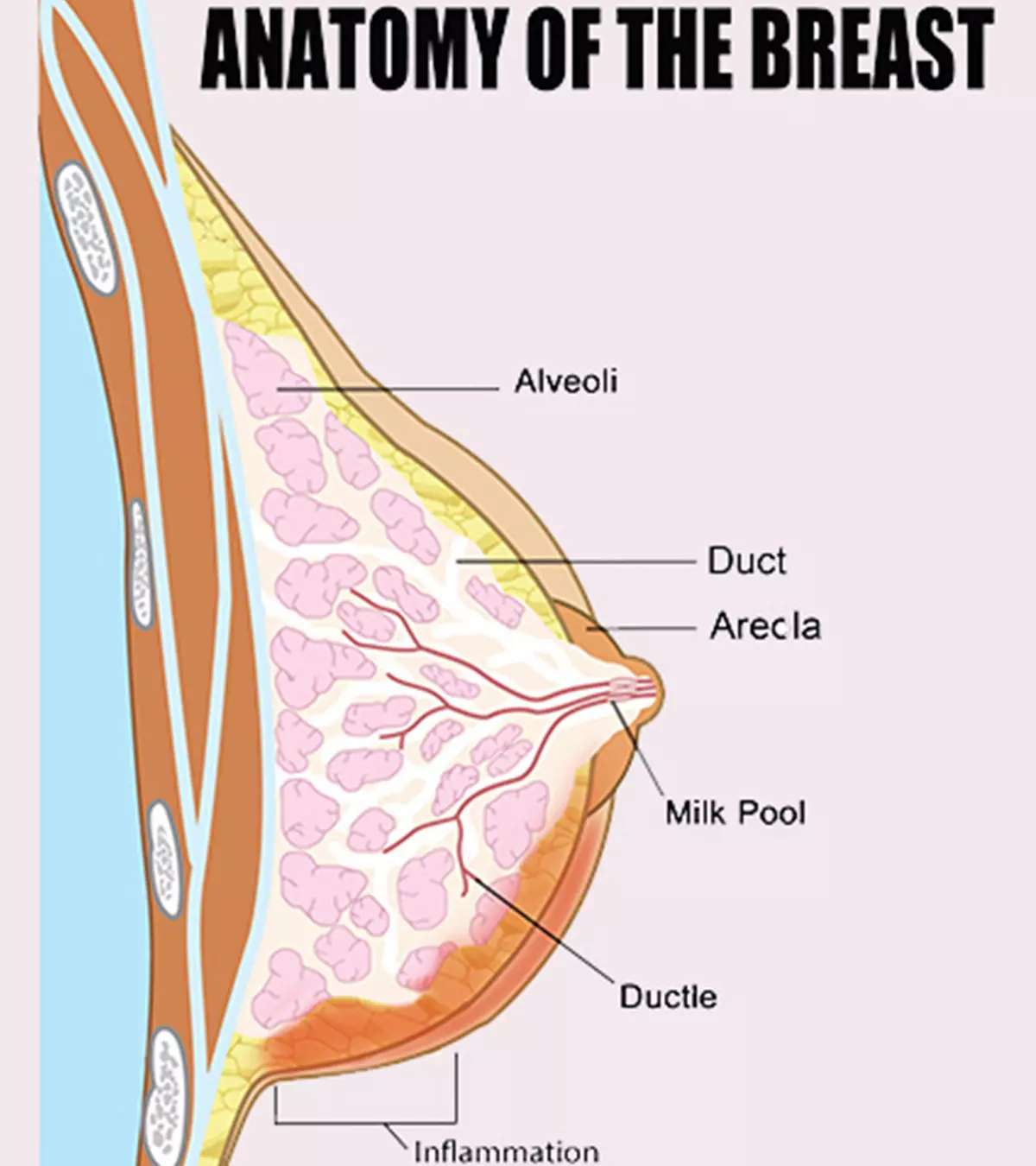

Image: iStock

Miscarriage, also called spontaneous abortion, is the natural loss of pregnancy before the embryo or fetus can survive independently outside the uterus. Around one in ten women miscarries within the first trimester (1). Vaginal bleeding and cramps are common symptoms of miscarriage. Unfortunately, it is not possible to completely prevent miscarriages since many causes are not modifiable.
Read this post to know about the causes, risk factors, symptoms, types, diagnosis, treatments, and myths and misconceptions about miscarriage.
What Are The Miscarriage Rates By Week?
The miscarriage rate measures the occurrence of miscarriage in specific weeks of pregnancy. According to the American College of Obstetricians and Gynecologists (ACOG), miscarriage is the most common form of pregnancy loss, and 26% of pregnancies end in miscarriages. This includes up to 10% of clinically recognized pregnancies (where ultrasound or pregnancy tissue is identified) and miscarriages before pregnancy is detected (2).
The relative risk of miscarriage in different weeks of pregnancy is (3) (4):
- 50 to 75% before week five
- 3% in week five
- 5% in weeks six to seven
- 2–4% in weeks eight to 13
- 1% in weeks 14 to 20
The miscarriage rate varies in each week of gestation. However, nearly 80% of miscarriages happen in the first trimester, and the miscarriage rate reduces as the pregnancy progresses.
What Are The Different Types Of Miscarriages?
Miscarriages occurring in the first trimester are called early miscarriage or early pregnancy loss. Late miscarriage, also called second trimester or mid-trimester loss, occurs after 12 weeks of pregnancy. Loss of pregnancy beyond 20 weeks of gestation is called a stillbirth.
Miscarriages can be of the following types (1) (5):
- Threatened miscarriage: Mild vaginal bleeding with cramping and a closed cervix. Half of the cases of threatened miscarriages go into inevitable miscarriage and end in pregnancy loss, whereas bleeding stops in others, and the pregnancy continues without any further problem.
- Inevitable miscarriage: Heavy vaginal bleeding, often with strong abdominal cramps and an open cervix. It typically ends in pregnancy loss.
- Incomplete miscarriage: Some products of conception (POC) or pregnancy tissue remain in the uterus after an incomplete miscarriage. The pregnancy can not be continued, and the remaining tissue is removed to avoid complications.
- Complete miscarriage: All the POC are expelled from the uterus in a complete miscarriage. Additional treatments are not required after this type of miscarriage. This is common for miscarriages occuring before 12 weeks.
- Missed miscarriage: Miscarriage without cramps and bleeding may go unnoticed by many women. The ultrasound shows a pregnancy sac without an embryo or an embryo without a heartbeat in missed miscarriages. The remaining tissue may pass by on their own or require medical attention.
- Septic miscarriage: Uterine infection before, during, or shortly after a miscarriage is called a septic miscarriage. Symptoms such as fever, vaginal discharge, and peritonitis are observed. It may cause sepsis and demands immediate care including antibiotic treatment.
- Recurrent miscarriage: The loss of two or more consecutive pregnancies before 20 weeks of gestation is called a recurrent miscarriage. Additional tests to look for the causes are recommended for women experiencing consecutive pregnancy loss. This type of miscarriage only affects about 1% of couples.
Diagnostic tests and treatment may vary depending on the type of miscarriage. However, it is not possible to continue viable pregnancy in any case except for threatened miscarriage.
What Are The Signs And Symptoms Of A Miscarriage?
Vaginal bleeding is a hallmark sign of a miscarriage. It could be light spotting, brownish discharge, or heavy bleeding with bright red blood or blood clots and may last for several days. However, light spotting is common in the first trimester and does not always indicate a miscarriage (6).
Other symptoms of miscarriage may include (6)
- Lower abdominal pain or cramps
- Vaginal discharge
- Expulsion of tissue and clots from the vagina
- Lack of pregnancy symptoms
- Severe back pain
These symptoms are not specific to miscarriage. However, seek medical care if you experience these symptoms during pregnancy.
What Are The Risk Factors And Causes Of Miscarriages?
According to the ACOG, around 60% of miscarriages occur randomly when the embryo gets an abnormal number of chromosomes (extra or missing) during fertilization (7). These genetic abnormalities occur by chance and do not result in a medical condition.
Chromosomal abnormalities can result in the following conditions (8):
- Blighted ovum: The fertilized egg is implanted into the uterine wall without an embryo (anembryonic pregnancy). The pregnancy sac and placenta may grow without the fetus.
- Early embryonic death: The embryo stops developing in the early weeks of pregnancy After the embryo dies, a viable pregnancy cannot continue.
- Molar pregnancy and partial molar pregnancy (hydatidiform mole): It occurs when the egg and sperm are abnormally fertilized. Molar pregnancies are a gestational trophoblastic disease (GTD). These tumor tissues cannot nourish and support the embryolike the placenta, and the pregnancy fails. They can sometimes be associated with cancerous changes of the placenta.
The following maternal health conditions can cause or increase the risk of miscarriages (8):
- Infections
- Chronic health conditions such as uncontrolled diabetes
- Thyroid disease
- Cervix and uterus abnormalities such as incompetent cervix (cervical insufficiency)
- Hormonal issues
- Use of alcohol, tobacco, or illicit drugs
- Being underweight, overweight, or obese
- Invasive prenatal tests such as amniocentesis and chorionic villus sampling (a slight increase of risk)
- Previous miscarriages
- Advanced maternal age of >35 years
Routine exercises such as cycling, jogging, and other high-density activities, working (if not exposed to harmful chemicals or radiation), and sexual intercourse don’t cause miscarriages. Avoid sexual intercourse only if your healthcare provider says so.
How Is A Miscarriage Diagnosed?
A pelvic exam and ultrasound test help confirm a miscarriage. Ultrasound imaging also helps to confirm that the POCare expelled from the uterus after a miscarriage. The following tests are ordered in case of a recurrent miscarriage (9) (10):
- Blood tests to look for a decline in hormone levels after a miscarriage
- Chromosome testing or genetic testing of the tissue of miscarriage to identify chromosomal anomalies in the This can be helpful while planning future pregnancies.
- Hysterosalpingogram, an X-ray of the fallopian tubes and uterus
- Hysteroscopy to visualize the uterus with a thin, telescope-like device
- Laparoscopy to view the pelvic organs with a fiber-optic device with a camera and light
- Endometrial biopsy to analyze tissue collected from the inner wall of the uterus
How Is A Miscarriage Treated?
Treatment options include expectant management, medcial management and surgical evacuation, which may vary from case to case.
No treatment is required after a complete miscarriage if the uterus is clear. Dilatation and curettage (D&C) or dilation and extraction (D&E) evacuates the POC from the uterus if the miscarriage is incomplete (10).
During this procedure, the cervix is dilated, and the pregnancy tissue are gently scraped from the uterus wall with devices or vacuum aspirators. Some may receive medications to expel the pregnancy tissue. Doctors may also recommend treatment for underlying conditions and Rh immunoglobulin if needed (1).
How To Prevent Miscarriages?
Miscarriages due to random genetic causes or unknown causes cannot be prevented. However, the following measures may help reduce your risk of miscarriage (11):
- Maintain a healthy, balanced diet and exercise regularly.
- Take folic acid /prenatal vitamins 2-3 months prior to trying to conceive daily
- Maintain a healthy weight before planning pregnancy.
- Avoid caffeine, unpasteurized dairy products, and raw or undercooked poultry, meat, and seafood.
- Get the necessary vaccines to prevent infections such as rubella during pregnancy
- Avoid smoking and using tobacco products, alcohol, and illegal drugs in the preconception period and during pregnancy
- Seek preconception care and early prenatal care to review chronic medical conditions and medications
Treating conditions such as antiphospholipid syndrome (APS) or Hughes syndrome with medications such as a combination of aspirin and heparin can reduce the risk of blood clots and recurrent miscarriages. Cervical cerclage (stitches in the cervix) can help prevent recurrent miscarriages in women with a weakened cervix.
What Are The Common Myths And Misconceptions About Miscarriage?
The following are some common myths and misconceptions about miscarriages (12):
- Miscarriage is rare.
- Self-care reduces the risk of miscarriage.
- Miscarriages are completely preventable.
- Traveling by air increases the risk of miscarriage
- The emotional state of the mother, such as stress or depression, can cause miscarriage
- Fright and shock during pregnancy may result in miscarriage
- Exercising during pregnancy can increase the risk of miscarriage.
- Lifting something may result in
- Working, especially if it requires long hours of standing or sitting, increases the risk for miscarriage.
- Eating spicy foods can cause pregnancy loss
- Having sex during pregnancy causes miscarriage
Frequently Asked Questions
1. Are miscarriages painful?
Not all miscarriages are painful. The pain during miscarriage may vary among women. Some may experience slight cramps like when menstruating, some may experience no pain, and a few may have strong cramps. It is also common to experience vaginal bleeding and pass blood clots (13).
2. How do I clean my uterus after a miscarriage?
The uterus typically expels all the POC and recovers by itself after a miscarriage. Women with incomplete miscarriages require medical procedures to clear the remaining tissue from the uterus. Do not self-medicate or use any products to clean the womb after a miscarriage.
3. When can I try to get pregnant again?
It is possible to conceive in the next menstrual cycle after a miscarriage. However, the couple may take some time to recover emotionally before the next pregnancy (14).
Ovulation can occur as soon as two weeks after a miscarriage. So you may consider birth control methods if you are not planning for pregnancy. Also, ask healthcare professionals about better options based on individual factors.
Women who have had consecutive miscarriages should consider genetic counseling and testing and other recommended tests to know its cause and prevent future pregnancy loss.
4. How long will I take to recover from a miscarriage?
Physical recovery from miscarriage may take a few hours to a couple of days. Usually, symptoms such as cramps and bleeding improve gradually. Avoid sexual intercourse and inserting anything in the vagina, such as a tampon, for two weeks after the miscarriage. Periods typically return within four to eight weeks after a miscarriage (15).
A miscarriage causes emotional aftershocks in many women. It is normal to have questions such as “why me?” or “was it my fault?” and feel sad, angry, and frustrated after a miscarriage. These emotions subside in a short time in most cases. However, consider consulting a healthcare provider and seeking counseling to overcome these issues if they don’t seem to improve.
5. What happens during a miscarriage with twins?
According to a study, the incidence of miscarriage (spontaneous abortion) in twin pregnancies is 17.1%, including 5% of complete miscarriages and 12.1% of vanishing twin syndrome (16). During a complete miscarriage, both embryos and the pregnancy tissues are expelled from the uterus.
6. Am I more fertile after a miscarriage?
It is unclear whether or not fertility increases after a miscarriage. Some doctors may suggest spacing the next attempt for conceiving by six months after a pregnancy loss. However, a study by the National Institutes of Health, USA, showed that women who attempted pregnancy within three months after an early miscarriage had the same chances, if not greater, of achieving a successful birth compared to those who waited for three months or more (17).
7. Can weak sperm cause a miscarriage?
Poor quality of sperm may be a cause of miscarriage. Sperm DNA integrity is crucial for embryogenesis and fetal health and damaged sperm DNA may lead to early pregnancy loss and congenital anomalies (18).
8. Will a pregnancy test be positive during a miscarriage?
Pregnancy tests determine the levels of the human chorionic gonadotropin (hCG) hormone, which may maintain higher levels in the body for quite some time after a pregnancy loss. Hence a pregnancy test may come positive during a miscarriage (19).
Vanishing twin syndrome occurs when one embryo in already detected multiple pregnancies is not detected in later tests. One of the fetuses in multiple pregnancies, such as twins or triplets, maybe miscarried or reabsorbed in this condition.
Pregnancy loss cannot be prevented since genetic issues are the most common cause. Seek medical care following a natural miscarriage to ensure that all the POC are expelled from the uterus. Consider birth control measures if you are not planning for the next pregnancy immediately after a miscarriage.
Key Pointers
- According to ACOG, miscarriage is the most common form of pregnancy loss and has different types, such as incomplete and complete miscarriage.
- The risk of miscarriage is highest in the first five weeks of pregnancy than between 14 to 20 weeks. • Vaginal bleeding, lower abdominal cramps, and expulsion of blood clots are some of the main signs and symptoms of miscarriage.
- Miscarriage due to unknown causes can’t be prevented.
- However, well-balanced food, maintaining a healthy weight, and taking prenatal vitamins could reduce the risk.
References
- Miscarriage.
https://www.cedars-sinai.org/health-library/diseases-and-conditions/m/miscarriage.html - Carla Dugas and Valori H. Slane; (2025); Miscarriage.
https://www.ncbi.nlm.nih.gov/books/NBK532992/ - Miscarriage.
https://www.cdc.gov/niosh/docket/archive/pdfs/NIOSH-105-A/0105-A-011310-AmericanPregnancy_Ref.pdf - Sudeshna Mukherjee
et al; (2013); Risk of Miscarriage Among Black Women and White Women in a US Prospective Cohort Study. - What Is A Miscarriage.
https://www.plannedparenthood.org/learn/pregnancy/miscarriage - Symptoms; Miscarriage.
https://www.nhs.uk/conditions/miscarriage/symptoms/ - epeated Miscarriages.
https://www.acog.org/womens-health/faqs/repeated-miscarriages - Miscarriage.
https://www.stclair.org/services/mayo-clinic-health-information/diseases-and-conditions/CON-20198833/ - Early Pregnancy Loss.
https://www.health.qld.gov.au/__data/assets/pdf_file/0033/139947/g-epl.pdf - Miscarriage.
https://my.clevelandclinic.org/health/diseases/9688-miscarriage - Prevention; Miscarriage.
https://www.nhs.uk/conditions/miscarriage/prevention/ - Causes; Miscarriage.
https://www.nhs.uk/conditions/miscarriage/causes/ - How do I know if I’m having a miscarriage?
https://www.plannedparenthood.org/learn/pregnancy/miscarriage/how-do-i-know-if-im-having-miscarriage - Trying again after a miscarriage.
https://www.tommys.org/baby-loss-support/miscarriage-information-and-support/pregnancy-after-miscarriage/getting-pregnant-after-miscarriage - Afterwards; Miscarriage.
https://www.nhs.uk/conditions/miscarriage/afterwards/ - Risk of spontaneous abortion in singleton and twin pregnancies after IVF/ICSI.
https://academic.oup.com/humrep/article/18/8/1720/2913557 - Trying to conceive soon after a pregnancy loss may increase chances of live birth.
https://www.nih.gov/news-events/news-releases/trying-conceive-soon-after-pregnancy-loss-may-increase-chances-live-birth - Kishlay Kumar et al.; (2012); Unexplained early pregnancy loss: Role of paternal DNA.
https://www.ncbi.nlm.nih.gov/pmc/articles/PMC3461744/ - There’s more than one type of miscarriage.
https://www.texaschildrens.org/pavilion-for-women
Community Experiences
Join the conversation and become a part of our nurturing community! Share your stories, experiences, and insights to connect with fellow parents.
Read full bio of Dr. Uma Mishra
Read full bio of Dr Bisny T. Joseph














